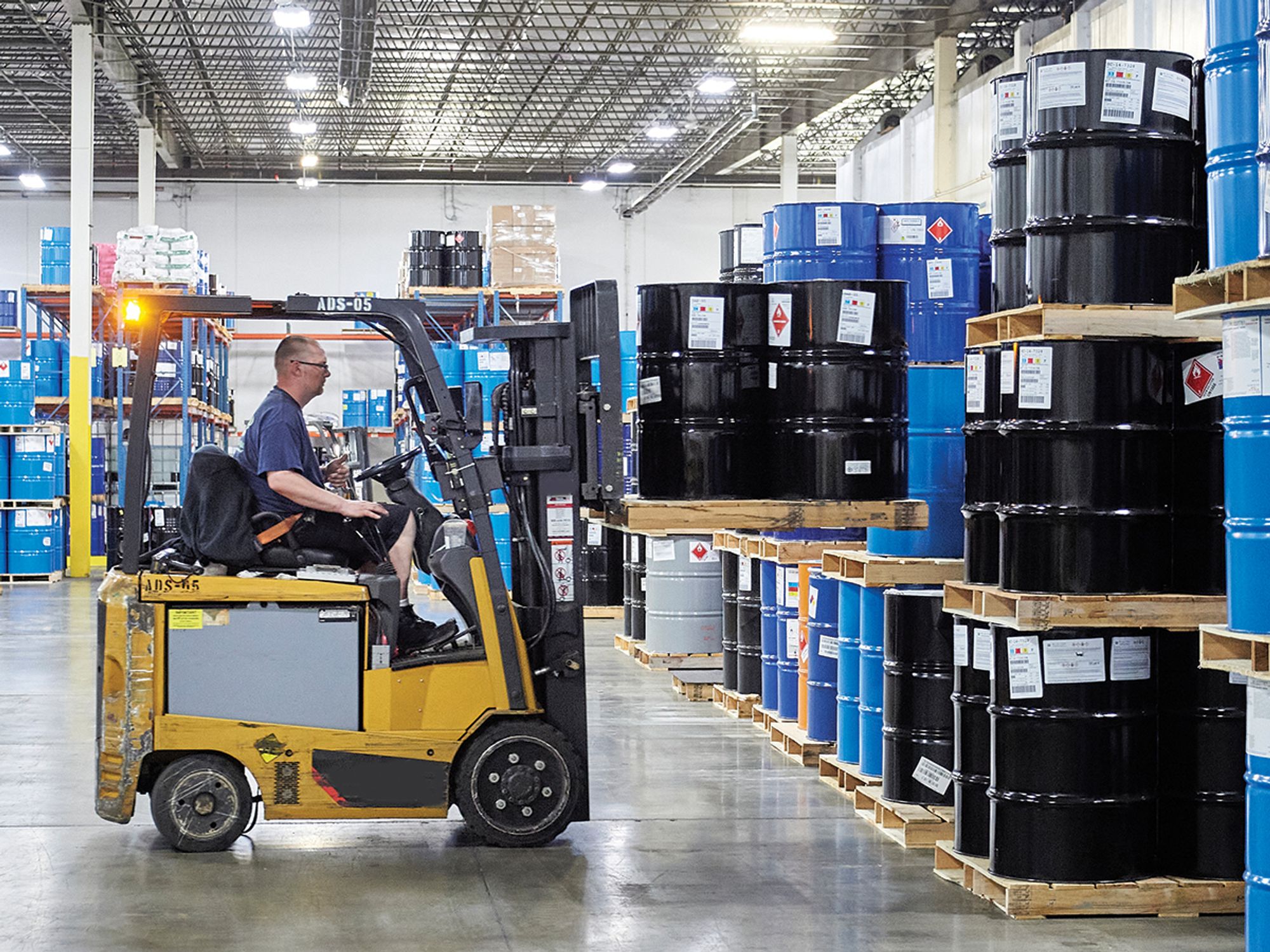Segregation

- Certain hazardous materials must not be stored or transported together, to prevent them from reacting with each other.
To prevent non-compatible hazardous materials from reacting with each other, the hazardous materials regulations (HMR) contain segregation requirements that indicate which hazardous materials may not be loaded, transported, or stored together. Hazardous materials which are in packages that require labels, in a compartment within a multi-compartmented cargo tank, or in a portable tank loaded in a transport vehicle or freight container are subject to the segregation requirements.
Hazardous materials may not be loaded, transported, or stored together, except as provided in the hazmat segregation table in Part 177.848. This helps to ensure nothing happens to endanger life or property during the transportation process.
In addition to the segregation table, cyanides and cyanide mixtures or solutions may not be stored, loaded, or transported with acids if a mixture of the materials would generate hydrogen cyanide.
Also, Division 4.2 materials may not be stored, loaded, or transported with Class 8 liquids, and a Division 6.1 Packing Group I, Hazard Zone A material may not be stored, loaded, or transported with Class 3 material, Class 8 liquids, and Division 4.1, 4.2, 4.3, 5.1, or 5.2 material.
Instructions for using the segregation table in Part 177.848 are as follows:
The absence of any hazard class or division or a blank space in the Table indicates that no restrictions apply.
The letter “X” in the Table indicates that these materials may not be loaded, transported, or stored together in the same transport vehicle or storage facility during the course of transportation.
The letter “O” in the Table indicates that these materials may not be loaded, transported, or stored together in the same transport vehicle or storage facility during the course of transportation unless separated in a manner that, in the event of leakage from packages under conditions normally incident to transportation, commingling of hazardous materials would not occur. Notwithstanding the methods of separation employed, Class 8 (corrosive) liquids may not be loaded above or adjacent to Class 4 (flammable) or Class 5 (oxidizing) materials; except that shippers may load truckload shipments of such materials together when it is known that the mixture of contents would not cause a fire or a dangerous evolution of heat or gas.
The “*” in the Table indicates that segregation among different Class 1 (explosive) materials is governed by the compatibility table for Class 1 (explosive) materials in 177.848(f).
The note “A” in the second column of the Table means that, notwithstanding the requirements of the letter “X”, ammonium nitrate (UN1942) and ammonium nitrate fertilizer may be loaded or stored with Division 1.1 (explosive) or Division 1.5 materials.
When the 172.101 Table or 172.402 requires a package to bear a subsidiary hazard label, segregation appropriate to the subsidiary hazard must be applied when that segregation is more restrictive than that required by the primary hazard. However, hazardous materials of the same class may be stowed together without regard to segregation required any secondary hazard if the materials are not capable of reacting dangerously with each other and causing combustion or dangerous evolution of heat, evolution of flammable, poisonous, or asphyxiant gases, or formation of corrosive or unstable materials.
